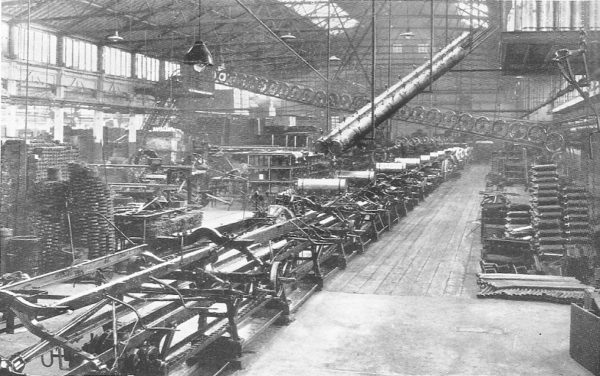
The history of car manufacture by Ford Motor Company in Britain is long and distinguished – and it all started here in Trafford Park, on the enormous industrial estate built alongside the Manchester Ship Canal. The opening of the canal in 1894 made Trafford Park, formerly a beautiful wooded estate where deer roamed free, a prime site for industrial development. After early failure to attract tenants by simply leasing the land, in 1908 Trafford Park Estates began to construct buildings for rent, including large concrete warehouses with sprinkler systems, ideal for cotton storage.
Industries arrived as early as 1898, but initial development was slow. The first American company to arrive was Westinghouse Electric, whose factory began production of turbines and electric generators in 1902.
Ford was the second major American company to set up manufacturing in Trafford Park, in 1911. The Ford importer, Percival Perry, was selling over 400 US built Fords per year from premises in London, and Ford made the decision to set up a factory, initially merely to assemble cars from parts made in the US. But by 1912 Ford could apply their freshly developed assembly-line techniques at the new Trafford Park facility, to manufacture the Model T. Between 1912 and 1913 output doubled from 3,000 to 6,000 cars, with 10,000 being planned for 1914 when war intervened. In 1912 the British-built Model Ts were offered at £175 on the British market when Austin were offering their smaller, slower 10 hp model for £240.
The First World War saw the factory continuing to make vehicles – now mainly tractors. Car production started again in 1918, but at the time of our Snapshot in 1923 the factory was close to its limits, and production moved to the new Dagenham plant in 1931.
But Ford was not finished with Trafford Park. From 1936, under the shadow factory plan, Herbert Austin was tasked with building nine new factories, and expanding or developing existing car-making facilities to enable them quickly to switch to aircraft production. Ford thus redeveloped their Trafford Park site to build Rolls-Royce Merlin engines – finally making over 34,000 engines from 1939 to the end of March 1946.
Our Snapshot comes from a 1923 promotional booklet produced by Trafford Park Estates. The caption to this picture tells us that the Model T chassis at the bottom left will in 15 minutes reach the end of the shop as a complete car, running out under its own power. We can see the petrol tanks sliding down from the roof to be added to the chassis, and behind them the sloping track bringing the wheels.
The Model T Ford was eventually replaced by the Model A on the Trafford Park production lines, at some time after its US introduction in 1927. The last Model A left the factory at the end of 1930.
There is one final, albeit tenuous, connection between Trafford Park and motor-car manufacture. In the beautiful fold-out map at the back of the promotional booklet we can see, just north of the Manchester United football ground that lies south of the Bridgewater Canal, the name Royce Ltd – still making cranes in Manchester twenty years after its founder decided that he could make a car far better than his Decauville.







Leave a Comment